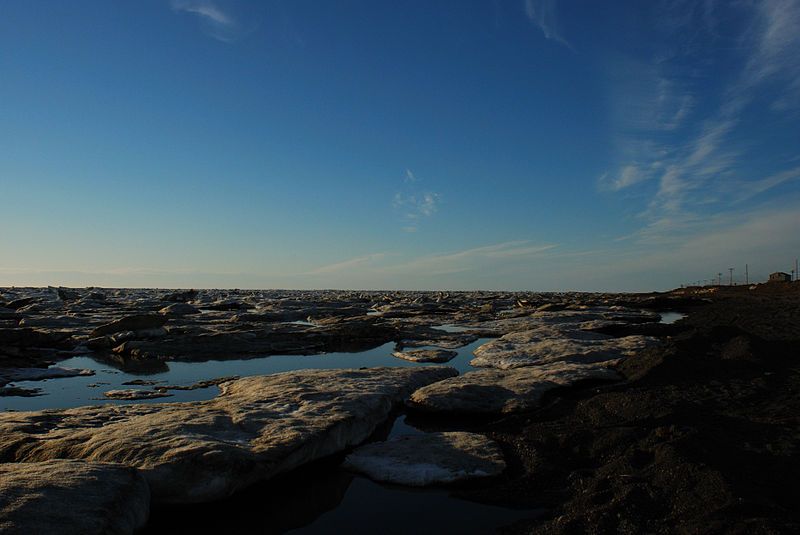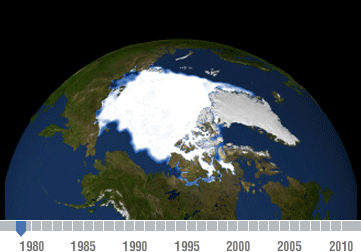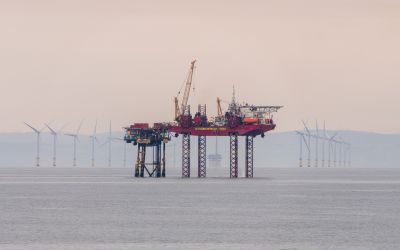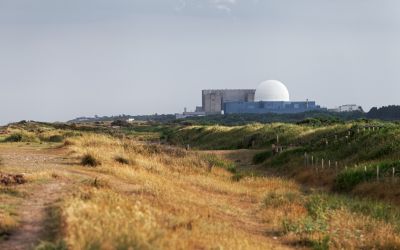Technological fixes urged to reduce Arctic melt
The Arctic could be ice free in the summer much sooner than we think, and with that will come huge consequences for the planet.

The Arctic could be ice free in the summer much sooner than we think, and with that will come huge consequences for the planet. Scientists have told UK MP’s that methane release caused by the melting could create a planetary emergency, enhancing warming considerably.
The latest alarming news is that the warming of Arctic waters will lead to melting of the underwater permafrost. The team involved showed a warming of the water off northern Siberia to around 5C has occurred and temperatures of this order will begin to melt the permafrost. It is expected to get much worse over the coming years. Some evidence suggests massive methane release from Arctic regions caused extinction events twice in the history of the planet.
As a result, technological fixes are being pushed onto the table as a means to remedy the situation. Unfortunately, the timescales given for carbon dioxide reduction are looking to be too long term to be able to save the Arctic from a complete melt. With a binding agreement not likely to be starting until the end of the decade, and emissions not likely to be peaking until well after this, the Arctic is likely to be gone by then.
The wave energy pioneer Stephen Salter has shown the planet could be cooled by spraying sea water into the atmosphere at high latitudes. This originally called for cloud creating ships to float around the ocean, powered by renewable energy; Salter now says that this cannot be achieved in the timescale necessary to save the Arctic.
"I don't think there's time to do ships for the Arctic now," he said at a meeting of the Arctic Methane Emergency Group, "We'd need a bit of land, in clean air and the right distance north... where you can cool water flowing into the Arctic." He went on to suggest the Faeroes or islands in the Bering Strait.
The structures involved would be simplified versions of the ships, with seawater being pumped into the atmosphere during summer months in exceedingly fine droplets; Fine droplets create whiter clouds, which in turn reflect more of the suns energy.

The problem of shrinking Arctic ice is alarming. Whilst the popular media focus on the total area of ice, which has shown an up and down yet declining trend over recent times, the volume of ice is shrinking almost year on year according to the PIOMAS Ice Volume Project, and if trends continue, the ice could be gone within a decade.
It has been known for some time that the Arctic regions are more sensitive to climate change, and whilst the tropics might only experience several degrees of warming, the Arctic could have double this. Several degrees increase is a considerable warming effect, but 10C would be a catastrophic change, bringing about massive alterations to the entire Northern Hemisphere climate.
Even given these huge potential consequences, many scientists are not interested in discussing the problem of technological fixes for the methane problem. These fixes are seen as a step too far, or as venturing into the unknown. Some consider it too difficult to implement, whilst others say that there is a possibility of causing more harm than good. Some techniques, such as putting dust in the stratosphere, would cause massive Artic warming for example. Since the techniques have never been attempted before, most scientists have expressed caution at proceeding without first ascertaining whether it is absolutely essential. It is therefore seen as a last resort rather than a legitimate method to reduce warming.
The cost of geo-engineering is also great. The scale of the problem and the money involved mean it will be difficult to find the funding necessary. There is little incentive for private investment, and public purses are squeezed for the foreseeable future.
In related news, the HadCRUT dataset, one of the three most recognised world datasets, has been updated to reflect new data for the Arctic, as well as other new data around the world. The overall impression of warming has not changed, but the warmest year has shifted from 1998 to 2010, along with other subtle changes.
Phil Jones, who is one of the lead researchers at the Climatic Research Unit says “HadCRUT is underpinned by observations and we've previously been clear it may not be fully capturing changes in the Arctic because we have had so little data from the area. For the latest version, we have included observations from more than 400 (observation) stations across the Arctic, Russia and Canada.” This gives us a better understanding of the warming in the northern latitudes, which are warming much faster than the rest of the globe.
The records from the Arctic include sea surface temperature recorded by passing ships. These records have been updated extensively, taking into account new understandings in measurement methods. "An example of this is the rapid change in the kinds of measurements we see in the digital archives around the Second World War," says Peter Stott, head of climate monitoring and attribution at the Met Office. "Research has shown readings from buckets were generally cooler so when the database changes from one source to another, you see artificial jumps in the temperature. We have quantified these effects and corrected them, providing a clearer view of the evolution of global temperatures.”
Image 1 | Arctic ocean from the coast | Andrei | Wiki Commons
Image 2 | Arctic sea ice loss animation | NASA | Wiki Commons






